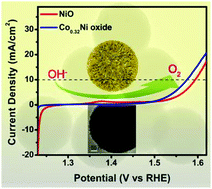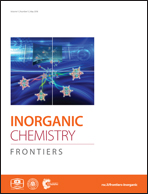Core–shell structured hierarchically porous NiO microspheres with enhanced electrocatalytic activity for oxygen evolution reaction†
Abstract
The design and synthesis of efficient catalysts to substitute the currently effective and sturdy electrocatalysts composed of precious metal-based materials (e.g., IrO2 and RuO2) for the oxygen evolution reaction (OER) is still a huge challenge. In this regard, nickel-based OER catalysts with specific properties have drawn widespread attention. Herein, we prepared core–shell structured hierarchically mesoporous NiO microspheres through the thermal decomposition of Ni(OH)2 microspheres, which were synthesized through a one-pot hydrothermal method. The obtained NiO microspheres possess numerous mesopores, a high BET surface area, and 2D nanosheet-like shells, which largely promote mass/charge transportation and reduce ion transport pathways. By increasing the molar ratio of HMTA/Ni2+, the thickness of the outer nanosheet-like shell can be varied in the range of 0–35 nm. In particular, the NiO-300/r = 2 microspheres possess excellent properties for OER (overpotential of 360 mV to reach 10 mV cm−2), compared with previously-reported Ni-based materials. Furthermore, improved activity with an overpotential of 340 mV was reached by introducing Co.



 Please wait while we load your content...
Please wait while we load your content...